Acetoacetanilide
- CAS NO.:102-01-2
- Empirical Formula: C10H11NO2
- Molecular Weight: 177.2
- MDL number: MFCD00008780
- EINECS: 202-996-4
- SAFETY DATA SHEET (SDS)
- Update Date: 2025-01-27 09:38:02
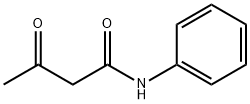
What is Acetoacetanilide?
Chemical properties
White to off-white powder
The Uses of Acetoacetanilide
Acetoacetanilide is used as intermediate for the manufacture of organic pigments and dyestuffs.
The Uses of Acetoacetanilide
Acetoacetanilide (AAA) flakes is used as an intermediate for the manufacture of organic pigments and dyestuffs. For further information consult the Product information sheet. Product Data Sheet
The Uses of Acetoacetanilide
Acetoacetanilide may be used to synthesize:
- azo pigments
- acetoacetanilido-4-aminoantipyrine (Schiff base)
- 6-aryl-2-methyl-4-oxo-N,N′-diphenyl-2-cyclohexene-1,3-dicarboxamides
- photoluminescent lanthanide complexes
Synthesis Reference(s)
The Journal of Organic Chemistry, 56, p. 1713, 1991 DOI: 10.1021/jo00005a013
General Description
White crystalline solid.
Air & Water Reactions
Water insoluble.
Reactivity Profile
Organic amides react with azo and diazo compounds to generate toxic gases. Flammable gases are formed by the reaction of organic amides with strong reducing agents. Amides are very weak bases (weaker than water). Mixing amides with dehydrating agents such as P2O5 or SOCl2 generates the corresponding nitrile. The combustion of these compounds generates mixed oxides of nitrogen (NOx). Ketones are reactive with many acids and bases liberating heat and flammable gases (e.g., H2). The amount of heat may be sufficient to start a fire in the unreacted portion of the ketone. Ketones react with reducing agents such as hydrides, alkali metals, and nitrides to produce flammable gas (H2) and heat. Ketones are incompatible with isocyanates, aldehydes, cyanides, peroxides, and anhydrides. They react violently with aldehydes, HNO3, HNO3 + H2O2, and HClO4.
Health Hazard
ACUTE/CHRONIC HAZARDS: Acetoacetanilide is a weak allergen. When heated to decomposition it emits toxic fumes.
Fire Hazard
Acetoacetanilide is combustible.
Safety Profile
Poison by intraperitoneal route. Moderately toxic by ingestion. A weak allergen. See also ACETANILIDE. Combustible when exposed to heat or flame. See ANILINE and CYANIDE for disaster hazard. When heated to decomposition it emits toxic NOx, fumes. To fight fire, use alcohol foam, water mist, CO2, dry chemical.
Purification Methods
Crystallise the anilide from H2O, aqueous EtOH or pet ether (b 60-80o). [Williams & Krynitsky Org Synth Coll Vol III 10 1955.]
Properties of Acetoacetanilide
| Melting point: | 83-88 °C (lit.) |
| Boiling point: | 129°C 24mm |
| Density | 1.26 |
| vapor density | 6.1 (vs air) |
| vapor pressure | 0-0.013Pa at 20-50℃ |
| refractive index | 1.5168 (estimate) |
| Flash point: | 325 °F |
| storage temp. | Refrigerator |
| solubility | Chloroform (Slightly), Methanol (Slightly) |
| form | Crystalline Powder |
| pka | 12.21±0.46(Predicted) |
| color | White |
| Water Solubility | 5 g/L (20 ºC) |
| Merck | 14,58 |
| BRN | 473419 |
| Stability: | Stable. Combustible. Incompatible with strong oxidizing agents. |
| CAS DataBase Reference | 102-01-2(CAS DataBase Reference) |
| NIST Chemistry Reference | Butanamide, 3-oxo-N-phenyl-(102-01-2) |
| EPA Substance Registry System | Acetoacetanilide (102-01-2) |
Safety information for Acetoacetanilide
| Signal word | Warning |
| Pictogram(s) |
 Exclamation Mark Irritant GHS07  Health Hazard GHS08 |
| GHS Hazard Statements |
H302:Acute toxicity,oral H312:Acute toxicity,dermal H341:Germ cell mutagenicity |
| Precautionary Statement Codes |
P201:Obtain special instructions before use. P202:Do not handle until all safety precautions have been read and understood. P280:Wear protective gloves/protective clothing/eye protection/face protection. P308+P313:IF exposed or concerned: Get medical advice/attention. P405:Store locked up. P501:Dispose of contents/container to..… |
Computed Descriptors for Acetoacetanilide
Acetoacetanilide manufacturer
New Products
4,4-Difluoropiperidine hydrochloride tert-butyl 9-methoxy-3-azaspiro[5.5]undecane-3-carboxylate Indole Methyl Resin N-Isopropylurea N,N-Dicyclohexylcarbodiimide(DCC) MELDRUMS ACID 5-METHYLISOXAZOLE-4-CARBOXYLIC ACID Magnessium Bis glycinate Zinc ascorbate 1-bromo-2-butyne 2-acetamidophenol 9(10H)-anthracenone Erythrosin B, 4-Piperidinopiperidine 2-((4-morpholinophenylamino) (methylthio) methylene) malononitrile 2,4-dihydroxybenzaldehyde 3-(4-morpholinophenylamino)-5-amino-1H-pyrazole-4-carbonitrile Methyl 2-methylquinoline-6-carboxylate 2,6-dichloro-4-nitropyridine 4-Bromo-2-chlorobenzonitrile 2-(benzylamino)acetic acid hydrochloride 4-(tert-Butoxycarbonylamino)but- 2-ynoic acid 3,4-dihydro-2H-benzo[b][1,4]dioxepine 1-Phenyl-1-cycloprppanecarboxylicacidRelated products of tetrahydrofuran

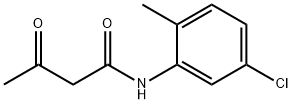
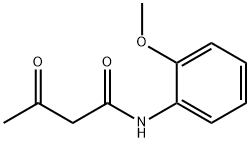
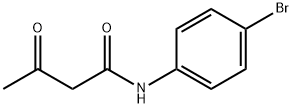

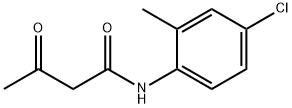
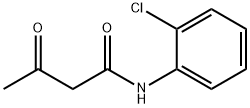
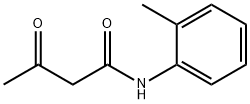
You may like
-
 Acetoacetanilide CAS 102-01-2View Details
Acetoacetanilide CAS 102-01-2View Details
102-01-2 -
 ACETOACETANILIDE For Synthesis CAS 102-01-2View Details
ACETOACETANILIDE For Synthesis CAS 102-01-2View Details
102-01-2 -
 Acetoacetanilide 98% CAS 102-01-2View Details
Acetoacetanilide 98% CAS 102-01-2View Details
102-01-2 -
 Acetoacetanilide CAS 102-01-2View Details
Acetoacetanilide CAS 102-01-2View Details
102-01-2 -
 solid Acetoacetanilide CAS Number: 102-01-2, For Industrial, Packaging Type: BagView Details
solid Acetoacetanilide CAS Number: 102-01-2, For Industrial, Packaging Type: BagView Details
102-01-2 -
 ACETOACETANILIDE 98%, Powder, 500 gmView Details
ACETOACETANILIDE 98%, Powder, 500 gmView Details
102-01-2 -
 AcetoacetanilideView Details
AcetoacetanilideView Details
102-01-2 -
 20677-73-0 (2,2-diethoxyethyl)methylamine 98%View Details
20677-73-0 (2,2-diethoxyethyl)methylamine 98%View Details
20677-73-0
